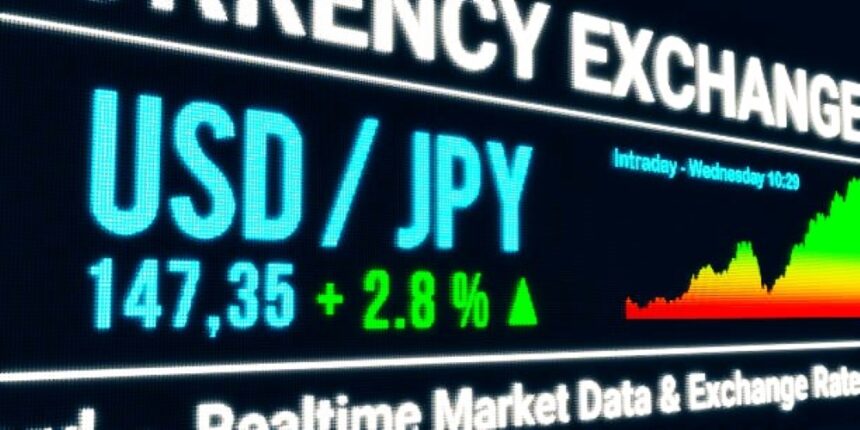Japanese yen corrected from a 38-year high of 161.95.
The Japanese yen (JPY) edged higher versus the US dollar (USD) on Thursday. The USDJPY pair has dropped from its peak of 161.95, a level not seen since 1986. Traders continue to monitor the JPY for large fluctuations and potential intervention by Japanese authorities to prevent severe devaluation.
The Nikkei 225 Index surges to roughly 40,700 points, boosted by gains on Wall Street overnight.
The Nikkei 225 Index rose to near 40,700 on Thursday, tracking Wall Street gains overnight. The weakening yen also boosted shares. by improving the profitability prospects for Japan’s export-driven industries.
US dollar is under pressure as weak economic data raises prospects of Fed rate cuts in 2024.
The US Dollar (USD) encountered headwinds as US Treasury yields fell, prompted by weak economic data that raised expectations of Federal Reserve (Fed) interest rate reduction in 2024. The US markets will be closed on Thursday in commemoration of the Independence Day holiday.
Daily Market Movers: Japanese Yen strengthens on growing probability of Fed rate cuts.
On Wednesday, Rabobank FX analysts stated that yield differentials are critical to the Japanese yen forecast. They claimed that FX intervention was impending because to the Japanese Yen’s depreciation, which is weighing on consumer confidence.
OCBC strategists Frances Cheung and Christopher Wong note that the USDJPY’s continued rise is heightening intervention expectations. However, there It is speculated that authorities may watch the amount to which they allow additional decline before acting.
The US ISM Services PMI fell dramatically to 48.8 in June, the largest drop since April 2020. This data fell far below market forecasts of 52.5, following a reading of 53.8 in May.
According to the ADP Employment report, US private enterprises added 150,000 employees to their payrolls in June, the lowest increase in five months. This amount fell short of the projected 160,000 and was lower than the downwardly revised 157,000 in May.
Federal Reserve Bank of Chicago President Austan Goolsbee told BBC Radio that bringing inflation back to 2% will take time.
On Wednesday, Federal Reserve Bank of Chicago President Austan Goolsbee told BBC Radio that bringing inflation back to 2% will take time and that additional economic statistics are needed. However, on Tuesday, Fed Chairman Jerome According to Reuters, Powell stated that the central bank is returning to its disinflationary policies.
The minutes of the Federal Reserve’s June 11-12 monetary policy meeting, released on Wednesday, indicated that Fed members were in a waiting posture. “Some participants emphasized the Committee’s data-dependent approach, with monetary policy decisions being conditional on the evolution of the economy rather than being on a preset path.”
The Japanese yen (JPY) edged higher versus the US dollar (USD) on Thursday. The USDJPY pair has dropped from its peak of 161.95, a level not seen since 1986.
On Wednesday, Reuters reported, citing two government sources, that Japan’s Ministry of Finance may issue a new type of floating-rate bond to help investors reduce the risks of rising bond yields. This decision comes as Japanese policymakers brace for further rate hikes by the Bank of Japan.
On Tuesday, Federal Reserve Chair Jerome Powell signaled a minor dovish shift. Powell indicated the Fed is returning to a disinflationary course. Powell, however, wants to see more evidence before decreasing interest rates, since the US economy and labor market remain robust, according to Reuters.









